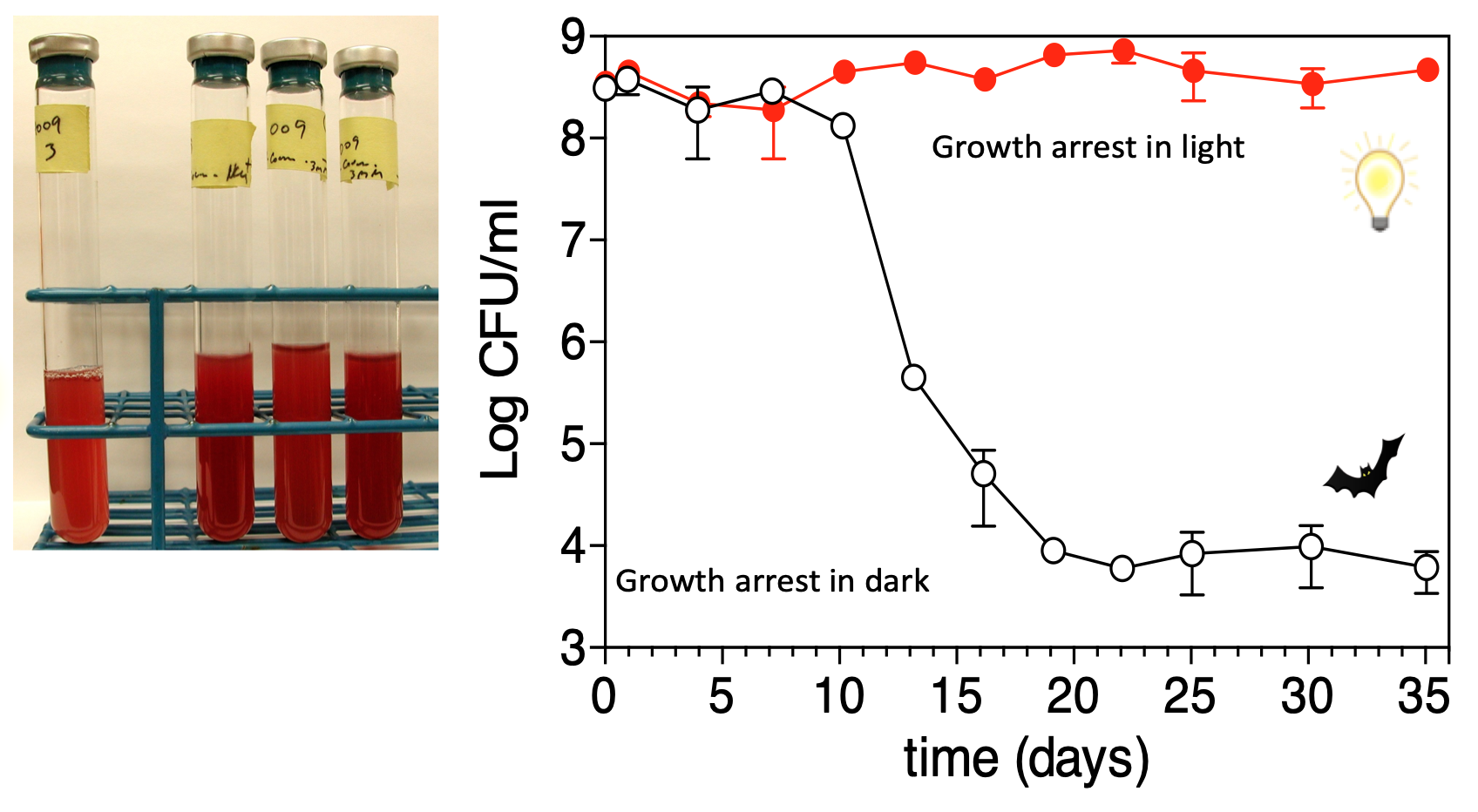
Bacterial Longevity
Microbiological research has focused primarily on understanding the physiology and dynamics of bacterial cells and populations during rapid growth. However, this rapid growth state is likely highly unusual in nature. It is known that many bacteria, including many pathogens, enter a growth-arrested state in which they remain viable for considerable periods of time. Non-growing pathogenic bacteria sometimes occur in human infections and in this form present challenges for treatment because antibiotics tend to target processes such as cell-wall biosynthesis or DNA replication that are active in growing, but not non-growing cells. Studying non-growing bacteria is also important in industrial contexts. For example, non-growing bacteria are excellent biocatalysts because they can convert to value-added products, compounds that might be used for growth. In past work we have studied production of hydrogen gas, a biofuel, by Rpal. When illuminated to allow ATP synthesis by photophosphorylation, non-growing cells diverted cell resources to hydrogen gas production and generated 300% more hydrogen gas than growing cells. We subsequently determined changes in metabolic fluxes and biomass composition that accounted for diversion of electrons to hydrogen gas in growth-arrested cells. We also found that non-growing Rpal embedded in thin strips of latex film remained viable and produced hydrogen gas for over four months .
Rpal is an excellent model organism for studies of bacterial longevity. We are asking the question: are there universal features of long-lived bacteria that we can uncover from studies of this proteobacterium? We have in hand a defined set of longevity genes and a good physiological characterization of cells in growth arrest and are poised to make rapid progress.